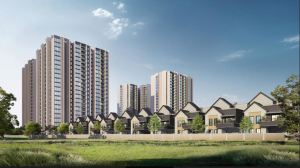
HOW CONNECTIVITY LEADS TO REAL ESTATE GROWTH
In modern and quickly changing world, which is driven by technology, the well-known mantra ‘location, location, location’ of real estate is increasingly giving way to the concept of attractiveness of the local area. Although the location of a project is crucial, the accessibility has played a significant role and is considered as the most vital factor be it for residences or businesses. The availability of pedestrian crossings, nearby transport hubs, and the access to co-working spaces are among the vital factors real estate investors consider while looking for a piece of property.
Evolution of Telecommuting and Digital Nomads
Both the pandemic and remote work are finding a way to breed digital nomads which are becoming more common by the year. In order to avoid losing such an effective option as a remote job due to issues with the reliability of internet connectivity, more and more people require a foolproof internet. Thanks to remote work which is gradually becoming the rule, high-speed internet is no more a luxury but a must not only for homes but also for commercial set-ups.
Access to Transportation Hubs
As for location, since the times immemorial being near transit has been a desirable attribute in realty, but more so now. LC Mittal, Director of Motia Group, points out, “Accessibility that is related to airports train stations and major highways is of great strategic importance both for organizations and people. It allows convenient movement whether they are workers going to their offices or tourists to their travel dream spot.”
Also Read: Fixed Deposits: Earn up to 8.10% interest on 1-2 year FDs – Check latest rates
The Co-Working Revolution
Co-working spaces changed the way we do business. They attract the new style of work, which has the features of collaboration, creativity, and community. Anurag Goel, Director of Goel Ganga Developments, says, “Co-working spaces provide conferring, useful contacts, requisite materials and also stimulation for productivity.” Hence, they thrive the high demand to be around.
Smart City Integration
The idea of “smart cities” becomes more relevant as cities consider the expansion into technology-driven urban infrastructure. This integration is made possible by the connections between the technology. Sanjoo Bhadana, Managing Director of 4S Developers, says that smart cities are meant to be resource optimizing, life quality improving, and sustainability giving. Therefore, connectivity plays a crucial role to make all systems run smoothly. It is useful for ensuring smart transportation, energy management, and for providing citizens with convenient services.
Paving the Way for Redefined Amenities and Property Values
“Connectivity is now an appreciated attribute, which makes or breaks property prices and worth of a real estate. The modern day competitive business of rental spaces demands properties that possess robust internet infrastructure and are situated in close proximity to transport nodes and coworking-enabled office setups,” says Suren Goyal, partner, RPS Group. Developers and investors are now fully grateful for this revolution looking beyond mobility and creating projects with connectivity as a leading factor.
Sustainability and Environmental Considerations
Accordingly, alongside the convenience of connectivity, here is also the sustainability factor, which in turn decreases the imprint to the environment. As more and more work is done remotely and coworking spaces emerge, people can have control over when and where to work and, thus, have lower carbon footprints due to shorter commutes. Moreover, the smart city concept was boosted by the effective connectivity of all the other elements that effectively optimize the usage of natural resources and promote environment-friendly practices as well.
The future of real estate, together with connectivity, will continue to advance at an astonishing speed that will eventually become an integral part of our everyday lives, as well as the economic equilibrium itself.
As technology brings continuous evolutions up, the coupling of the connectivity into real estate will become more breeze of a job. Suren Goyal says, “In the future we have everything planned so that the connectivity will be a prime characteristic and not yet after the planning of the property. Internet infrastructure will be the most essential like electricity and water.”
Undeniably, the mantra of “location, location, location” is still in force, but it’s the connectivity that is of utmost importance today. Companies and individuals who rely on the services provided by the properties will make a choice of those that prioritize pediatric occupations, proximity to transportation and working spaces, and integration with co-working, offering flexibility as a function of the evolving needs. Adopting interconnectedness has become nothing more than a step if its aim is maintaining the rapid development of the real estate ecosystem.
2024-03-30T10:41:25Z dg43tfdfdgfd